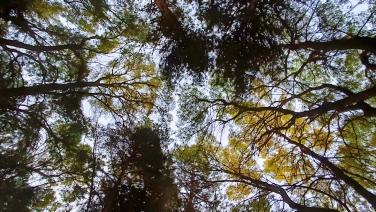
I propose to develop, during the winter residency at Tabakalera 2025, a sculptural and audiovisual investigation on Artikutza, the beech and oak forest that cradles part of the freshwater supply for Donostia.
As a consequence of my previous artistic research project, TÚ, the work on Artikutza would analyze the presence of the forest’s ecosystem during dusk and night, taking advantage of the winter schedule, and hybridizing it with my sculptural practice.
TÚ is a project focused on granting personhood rights to the first river in the world in New Zealand, thanks to the perseverance of the Māori people. The river, renamed Te Awa Tupua in 2017, encompasses not just the water but also its meanders and basins, its plants and fish, as well as the Māori people who inhabit it. Te Awa Tupua is a person-ecosystem, an ancestor and family. The TÚ project delves into the superimposition of narratives on top of the reality that surrounds us, combining a light installation with a book of interviews and texts as part of the artwork.
A little earlier, in 2014, the Māori also granted personhood to the Te Urewera forest. My interest in Artikutza partly stems from this. (Te Kawa o Te Urewera, a handbook created by the Te Urewera Board, “disrupts the norm” by clearly stating its goal to manage people for the benefit of the land. https://e.issuu.com/embed.html#18309847/53118734)
I would like to accompany the study of the book *Te Kawa o Te Urewera* with a study of Artikutza. The quality of water depends on the quality of the environment it traverses; after studying the idea of the river, it is interesting to study that of the forest that protects it.
